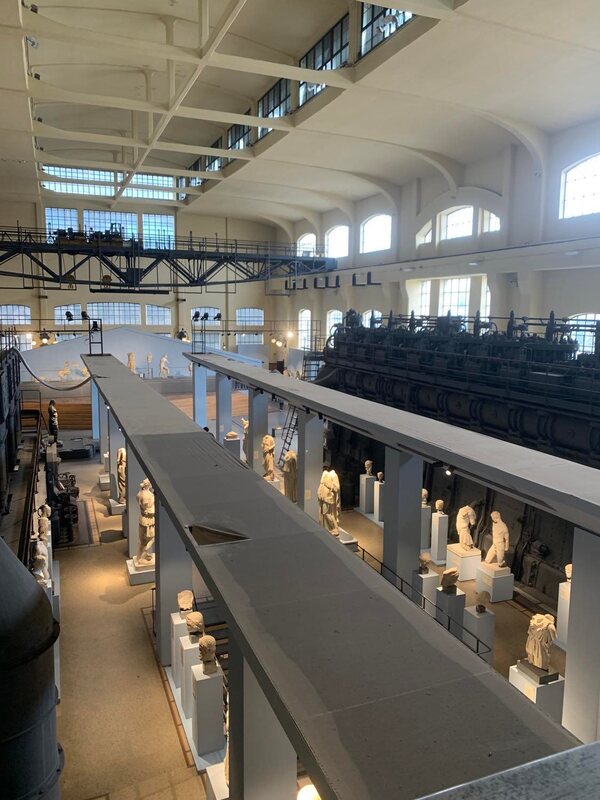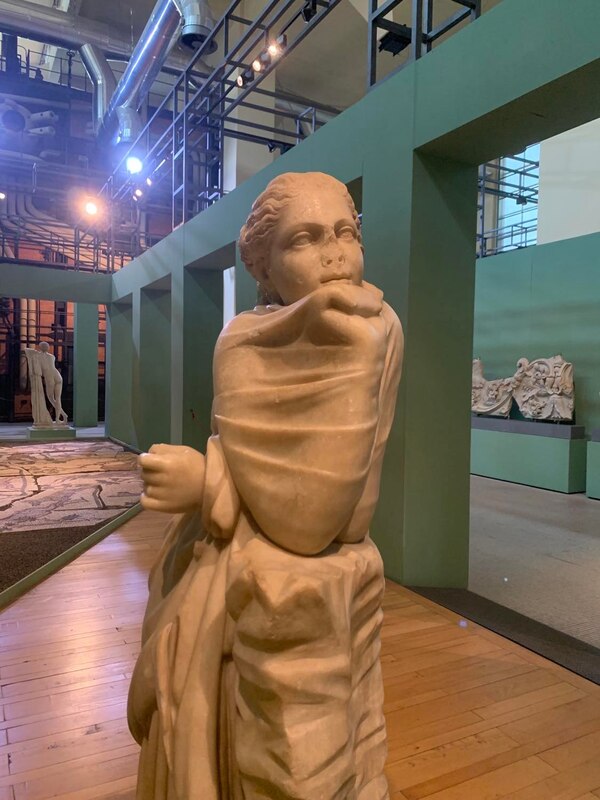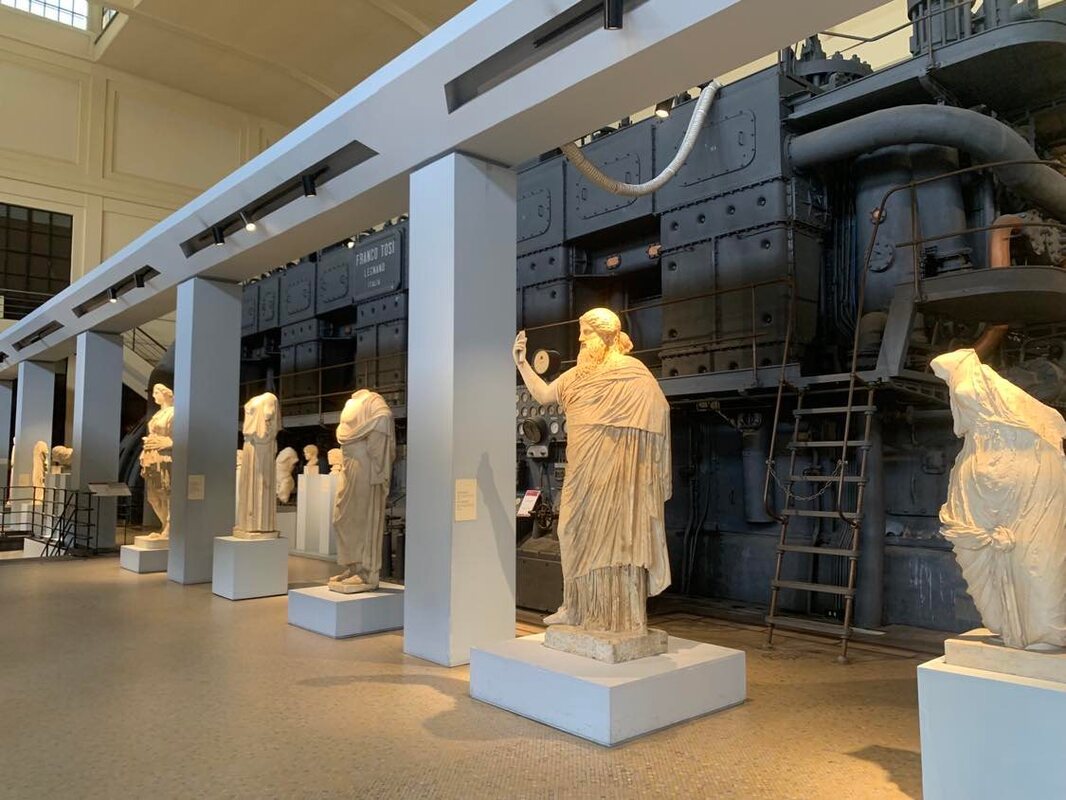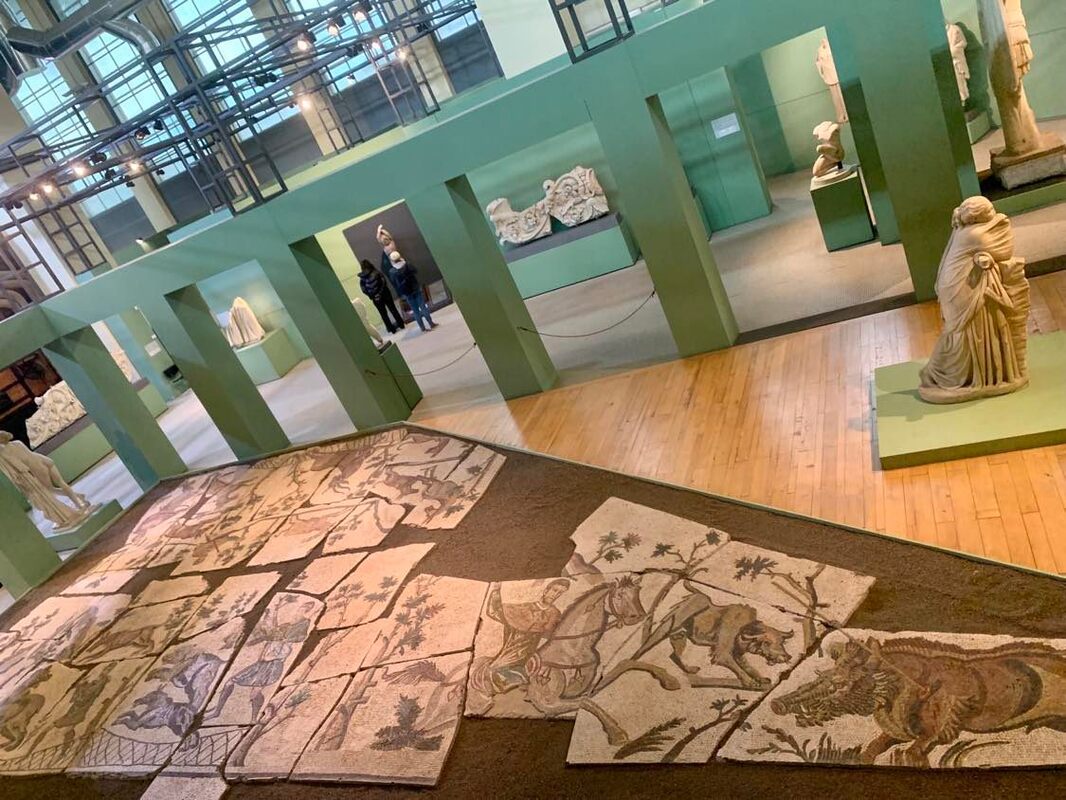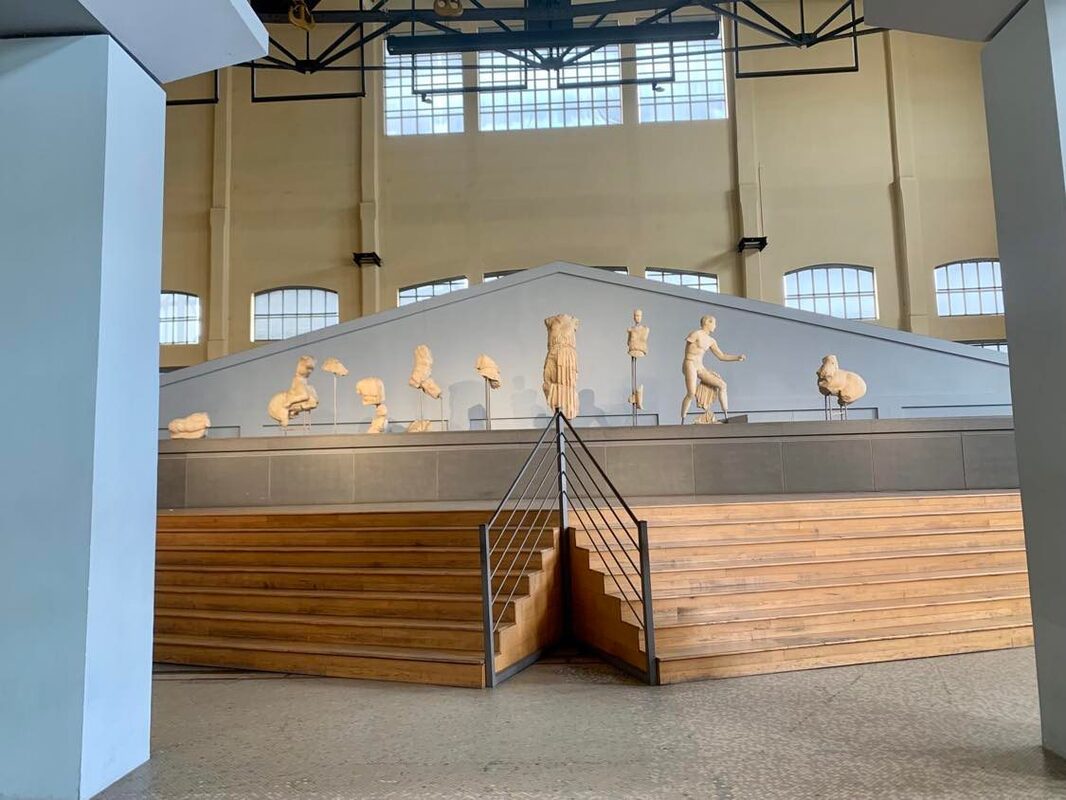 The center point of the “Le macchine e gli dei” exhibit The center point of the “Le macchine e gli dei” exhibit I was very fortunate to have an amazing visit to Rome a few weeks ago, my first in nearly five years! Since I have been a few times before, I decided to see some of the “off the beaten path” places that make Rome special to the locals and natives of Italy’s beautiful capital. One of those places is I Musei Capitolini Centrale Montemartini, an incredibly cool, niche museum located between Ostiense, Garbatella, and Monteverde in Rome. The museum is much revered among locals because it is a transformed industrial factory that now houses archeological artifacts from the Roman republic and empire. The museum is most well-known for its “Le macchine e gli dei” (“The machines and the gods”) exhibition, which opened with the museum in 1997. Located on the top floor of the museum, and with a convenient upper staircase that lets you take in the whole industrial structure and array of storied statues; the scene makes you feel at ease, even if the disquietude of experiencing two worlds colliding should not. The exhibit is so aesthetically appealing that it seemed as if industrial engines and towering statues of Roman deities’ heads were always meant to be compared side-by-side. Of course, this is not an objective truth, and the illusion of their comparability is what makes the museum so fascinating and captivating. The old Franco Tosi boilers and pumps juxtaposed with artifacts of demigods and muses produced a spirit of bellicose tranquility: a unity of opposites. The museum and exhibition also reminds me of “The Divine Image” by William Blake from his Songs of Innocence (1789): “To Mercy, Pity, Peace, and Love All pray in their distress; And to these virtues of delight Return their thankfulness. For Mercy, Pity, Peace, and Love Is God, our father dear, And Mercy, Pity, Peace, and Love Is Man, his child and care. For Mercy has a human heart, Pity a human face, And Love, the human form divine, And Peace, the human dress. Then every man, of every clime, That prays in his distress, Prays to the human form divine, Love, Mercy, Pity, Peace...” (Credit: Poetry Foundation) Pity and peace could be found in Polimnia’s gaze, love and mercy in Theseus’s running stance, love and pity in Apollo’s statue, mercy and pity in volcanic Agrippina the Minor, and mercy and peace in the outline of the seated girl. In addition to the incredible statues and industrial equipment, il museo has an extensive and impressive collection of ancient mosaics. The largest one by far, Mosaico con scene di caccia – Mosaic with hunting scenes, is a part of the “Le macchine e gli dei” exhibit. It was lifelike in size and features, and mind-blowing to think how much planning, design, and patience it must have taken to create an image so believable and delicate thousands of years ago. All in all, I musei capitolini centrale montemartini was a terrific, niche find! It gave me the space and time to think about Rome in a different way, with its various history and mythologies scattered about and framed against a more modern era.
Other hidden gems in Rome I recommend visiting:
Acknowledgements Grazie mille to my Roman friends who took me to some great new, authentic places. There is so much to do in Rome, but I am glad I have now explored the infamous and lesser-known spots of “The Eternal City.” Helpful links
References Centrale Montemartini. "Storia del museo." <https://www.centralemontemartini.org/it/il_museo/storia_del_museo>. Accessed: March 4, 2023. The Poetry Foundation. “The Divine Image.” <https://www.poetryfoundation.org/poems/43656/the-divine-image>. Accessed: March 4, 2023. Blog citation – Nordquist, Sienna. March 14, 2023. “On visiting I musei capitolini centrale montemartini.” <siennanordquist.com/blog>.
0 Comments
Your comment will be posted after it is approved.
Leave a Reply. |
AuthorSienna Nordquist is a PhD Candidate in Social and Political Science at Bocconi University. She is an alumna of LSE's MSc in European and International Public Policy and was a Robert W. Woodruff Scholar at Emory University. Archives
April 2025
Categories |

